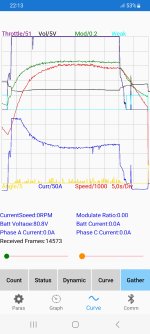Dui ni shuo de dui
10 kW
A friend made experiments on using contactors and they weren't conclusive. The contactors tended to fail in a closed position, which entirely defeated their purpose (well known automotive brand contactors). I thought about using contactors before but decided against it for this reason.Thanks for your info. I will be using contactor-controlled BMS (bypassing the BMS for discharge, but not for charge), so basically I just need something that has completely reliable LVC and HVC. Maybe balance too (it balances, right? As far as I can tell from Aliexpress page descriptions I am able to get some ANT models with active balance). I won't be using SOC, display, discharge current, ect.
As far as I know the ANT does passive balancing at 200mA per cell. It works well enough, I really don't think active balancing does much of a difference, the cells have stayed very much in balance for the past 6 years already so passive balancing seems to be more than enough.
The little display that comes with it is actually very nice, it does pretty much everything you could need. I integrated it in the dashboard of all my bikes, it works great.




